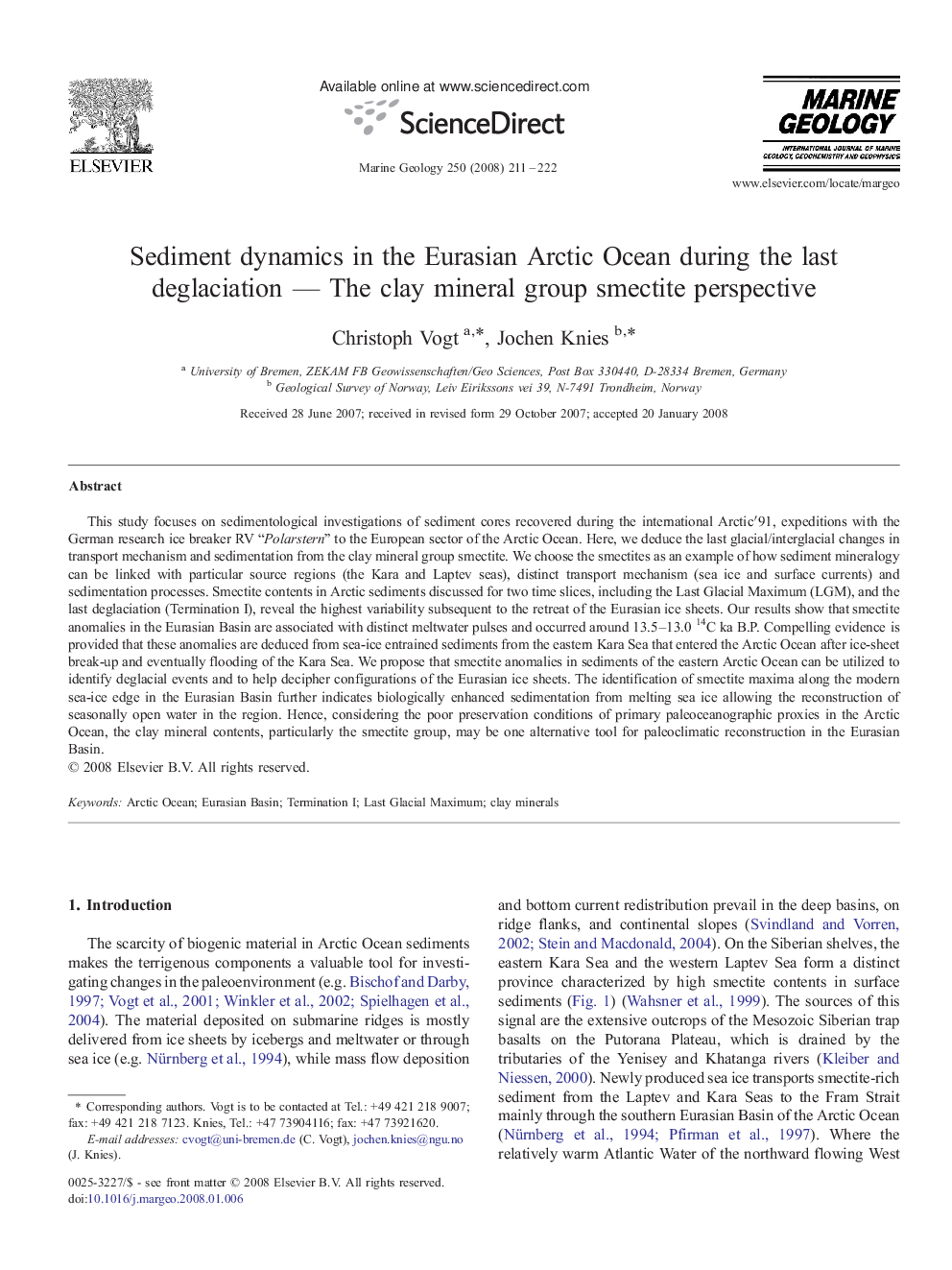| کد مقاله | کد نشریه | سال انتشار | مقاله انگلیسی | نسخه تمام متن |
|---|---|---|---|---|
| 4719217 | 1639181 | 2008 | 12 صفحه PDF | دانلود رایگان |

This study focuses on sedimentological investigations of sediment cores recovered during the international Arctic′91, expeditions with the German research ice breaker RV “Polarstern” to the European sector of the Arctic Ocean. Here, we deduce the last glacial/interglacial changes in transport mechanism and sedimentation from the clay mineral group smectite. We choose the smectites as an example of how sediment mineralogy can be linked with particular source regions (the Kara and Laptev seas), distinct transport mechanism (sea ice and surface currents) and sedimentation processes. Smectite contents in Arctic sediments discussed for two time slices, including the Last Glacial Maximum (LGM), and the last deglaciation (Termination I), reveal the highest variability subsequent to the retreat of the Eurasian ice sheets. Our results show that smectite anomalies in the Eurasian Basin are associated with distinct meltwater pulses and occurred around 13.5–13.0 14C ka B.P. Compelling evidence is provided that these anomalies are deduced from sea-ice entrained sediments from the eastern Kara Sea that entered the Arctic Ocean after ice-sheet break-up and eventually flooding of the Kara Sea. We propose that smectite anomalies in sediments of the eastern Arctic Ocean can be utilized to identify deglacial events and to help decipher configurations of the Eurasian ice sheets. The identification of smectite maxima along the modern sea-ice edge in the Eurasian Basin further indicates biologically enhanced sedimentation from melting sea ice allowing the reconstruction of seasonally open water in the region. Hence, considering the poor preservation conditions of primary paleoceanographic proxies in the Arctic Ocean, the clay mineral contents, particularly the smectite group, may be one alternative tool for paleoclimatic reconstruction in the Eurasian Basin.
Journal: Marine Geology - Volume 250, Issues 3–4, 1 May 2008, Pages 211–222